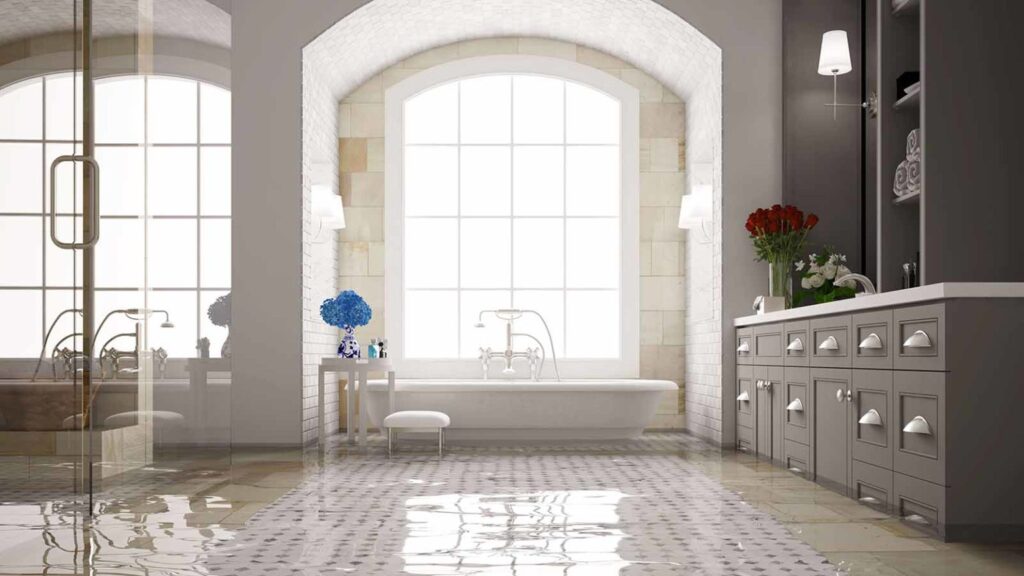
Water can be one of the most destructive forces inside a home. A burst pipe, leaking roof, or flooding event can cause immediate damage to walls, flooring, and furniture. What makes water damage especially dangerous is how quickly it spreads and how easily it can lead to long-term problems if not handled right away. One of the most common outcomes of untreated water damage is mold growth, which creates both structural and health concerns.
How Water Damage Happens
Water damage often starts small. A hidden plumbing leak inside a wall, condensation around windows, or water seeping through a poorly sealed roof may not be obvious at first. Over time, moisture soaks into wood, drywall, and insulation. Larger events, such as appliance failures or storm flooding, cause instant destruction. In both cases, the clock starts ticking the moment water enters the home.
The longer materials stay wet, the more difficult and expensive cleanup becomes. Within 24 to 48 hours, damp conditions are ideal for mold to develop. Once mold begins to spread, the restoration process involves not only drying and repairing water damage but also full remediation to remove mold colonies.
The Risks of Ignoring Water Damage
Ignoring water damage does more than ruin walls and flooring. The risks include:
- Structural damage. Wood framing can weaken, drywall crumbles, and ceilings may sag under the weight of trapped water.
- Electrical hazards. Water and electricity are a dangerous mix, creating risks of short circuits and fire.
- Mold growth. Moisture left behind becomes a breeding ground for mold. Once it spreads, it often requires professional remediation to protect air quality and prevent further damage.
- Health problems. Mold spores and bacteria from standing water can trigger allergies, asthma, or other respiratory issues.
A small leak that seems manageable can quickly grow into a serious problem that affects both the safety of the home and the well-being of the people living in it.
What Water Damage Restoration Involves
Water damage restoration is more than just mopping up visible water. It is a detailed process designed to return a property to a safe and livable condition. The steps typically include:
- Assessment. Professionals inspect the damage, identify the source, and create a restoration plan.
- Water removal. Pumps and vacuums extract standing water from the home.
- Drying and dehumidification. Industrial fans and dehumidifiers remove lingering moisture from walls, flooring, and air.
- Cleaning and sanitizing. Surfaces are disinfected to eliminate bacteria, odors, and contaminants.
- Repairs and restoration. Damaged drywall, flooring, and other materials are replaced or rebuilt to restore the home.
When mold is already present, remediation becomes a necessary part of the restoration process. This involves safely removing contaminated materials, cleaning affected surfaces, and treating the area to prevent mold from coming back.
Preventing Mold After Water Damage
The best way to prevent mold is to act quickly when water damage occurs. Drying out wet materials within the first day or two makes a significant difference. Homeowners should never assume water has fully dried on its own. Even a small amount of hidden moisture can be enough to fuel mold growth behind walls or under flooring.
Professional restoration services use specialized tools such as moisture meters and thermal imaging to locate water that cannot be seen. By ensuring every part of the home is dry, they help prevent mold from developing in the first place.
Choosing the Right Help
Not all situations require the same level of response. A small spill on a tile floor may be easy to handle at home, but larger problems require professional expertise. Companies that specialize in water damage restoration have the knowledge, equipment, and training to manage both water and mold safely.
Big Easy Restoration is one example of a company equipped to handle these challenges. With the right team, homeowners can have confidence that water damage will be addressed fully, preventing future complications.
Protecting Your Home and Health
Water damage is always urgent. The longer it lingers, the greater the risks to both the home and its occupants. Acting quickly with professional water damage restoration not only limits repair costs but also helps protect against mold, structural damage, and health hazards.
When water enters your home, the priority should be fast, thorough cleanup. By working with trained professionals and addressing the problem immediately, you protect your investment, restore comfort, and ensure your family is living in a safe environment.

